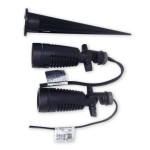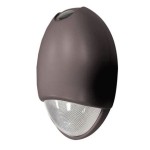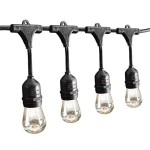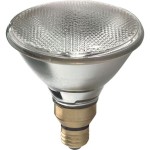How to Make Covers for Outdoor Furniture
Outdoor furniture, whether it’s a sturdy patio set or a delicate bistro table, requires protection from the elements to extend its lifespan. Harsh sunlight, rain, snow, and even dust can cause fading, discoloration, and damage. While purchasing ready-made covers is a convenient option, crafting custom covers offers a personalized touch, allows for tailored fit, and can be a cost-effective solution. This article will guide you through the process of making your own covers, providing step-by-step instructions and considerations for achieving a durable and stylish outcome.
Choosing the Right Fabric
The fabric selection is crucial for the longevity and functionality of your outdoor furniture covers. Opting for weather-resistant materials is essential to provide adequate protection against the elements. Here are some popular choices:
- Polyester: A durable and affordable option, polyester is water-resistant, fade-resistant, and easy to clean. Look for a blend with a UV-resistant coating for enhanced sun protection.
- Acrylic: Acrylic fabric boasts excellent colorfastness and water repellency. It’s also soft to the touch and available in a wide range of colors and patterns.
- Canvas: A robust and breathable material, canvas is highly durable and suitable for protecting larger outdoor furniture pieces. It's known for its long lifespan and rustic aesthetic.
- Vinyl: Extremely waterproof and easy to clean, vinyl is an excellent choice for covering furniture that gets exposed to heavy rain or snow. However, it can be less breathable than other options.
Consider the size and style of your furniture while choosing fabric. For smaller items like chairs or side tables, lighter fabrics like polyester or acrylic are suitable. For larger pieces like sofas or dining tables, heavier fabrics like canvas or vinyl are recommended.
Measuring and Cutting the Fabric
Before you start cutting, ensure you have the correct measurements and a well-defined pattern. It's advisable to use a tape measure and mark the measurements directly on the fabric using a fabric pen or tailor's chalk. This ensures accurate and precise results.
To make a cover, measure the width, depth, and height of your furniture. Remember to add extra fabric for seams and hems. This will help you create a snug and secure fit. For example, add 2-3 inches to each measurement to account for seam allowance and ease of fit. This will allow you to shape and adjust the cover as needed.
Once you have your measurements, use a fabric-safe cutting tool to cut the fabric pieces. A rotary cutter is ideal for straight lines and cuts, while scissors can be used for curved or complex shapes. Ensure you cut on a flat surface for accuracy and precision.
Sewing the Cover
Sewing the cover involves two main steps: assembling the basic structure and finishing the edges. This requires basic sewing skills and a sewing machine.
For the basic structure, sew the side panels to the bottom panel, creating a box-like shape. Ensure to leave an opening at the top for easy access to the furniture. The opening can be closed with a zipper or snaps, depending on your preference.
To finish the edges, fold and hem the raw edges of the fabric using a sewing machine. This prevents fraying and adds a professional touch. You can also create a welt binding for a more finished look. This involves sewing a strip of fabric along the edges, creating a decorative and durable finish.
Remember to choose a strong thread that matches your fabric color. If you are using a sewing machine, adjust the stitch length and tension for the specific fabric and thickness. For added durability, you can reinforce critical seams with a zigzag stitch.
Additional Tips for Making Covers
Here are some additional tips for making outdoor furniture covers:
- Consider adding a waterproof liner: A liner made of waterproof fabric like vinyl can further protect your furniture from moisture. This is especially helpful for covers that are exposed to heavy rain or snow.
- Include tie-down straps: Attaching straps to the cover helps secure it to the furniture, preventing it from blowing away in the wind.
- Add handles: Incorporating handles on the cover makes it easier to put on and take off. You can use fabric or leather handles for a stylish touch.
- Use a sewing pattern: If you are unfamiliar with sewing, using a pre-made pattern can simplify the process. This will provide a guide for cutting and assembling the cover.
- Practice on scrap fabric: Before working with your main fabric, practice your cuts and seams on scraps of fabric. This will help you refine your technique and avoid costly mistakes.
Creating custom covers for your outdoor furniture is a rewarding endeavor that combines practicality and personalization. Following the steps outlined above and considering the tips provided, you can craft durable and stylish covers that will protect your furniture for years to come.

Outdoor Furniture Covers An Easy Diy Project Canvas Etc

How To Make Patio Furniture Covers

Diy Outdoor Furniture Covers Hometalk

Sew Easy Outdoor Cushion Covers Confessions Of A Serial Do It Yourselfer

The Best Outdoor Furniture Covers That Don T Cost A Fortune Craftivity Designs

How To Re Cover Outdoor Cushions A Quick Easy Diy Oh Yay Studio Color Painting Making Everyday Celebrating

Outdoor Furniture Covers An Easy Diy Project Canvas Etc

Sew Easy Outdoor Cushion Covers Confessions Of A Serial Do It Yourselfer

Diy Outdoor Furniture Covers Hometalk

Easy Ways To Make Indoor And Outdoor Chair Cushion Covers In My Own Style
Related Posts







